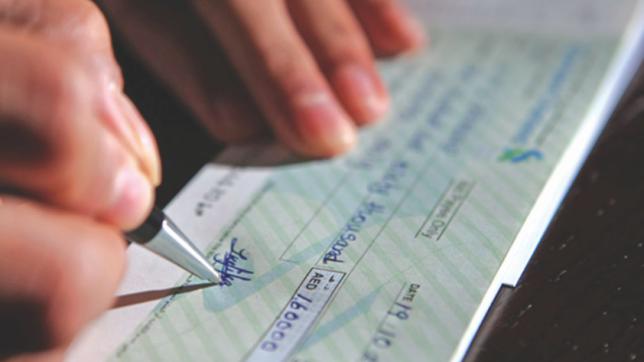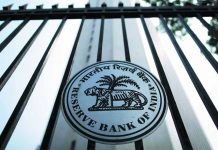The author of this article is Mihir Sharma from the School of Law, Jagran Lakecity University. This article explicates the necessary details about cheques and cheque bounce and their essentials and also provides an elaborate study on the procedures for relief and the legal precedents that the guilty person faces in India.
Table of Contents
Introduction
A cheque is how a person who possesses money in the bank can withdraw it out when needed. It is a ‘bill of exchange’ payable at the demand and is always drawn by a specified banker. The person who issues the cheque is called the ‘drawer’ and the ‘drawee’ is the person in whose favour the cheque has been issued. To sum it all up in a sentence, a cheque is a legal instrument for the withdrawal of money from the bank by submitting it to the bank with the drawee’s name, date, amount, and the signature of the drawer.
What is a cheque bounce
Today, online transactions of money have become the norm for small-scale payments, big business deals, and salary payments of the employees. In the wake of the current pandemic and the lockdown that followed it, online substitutes of many daily-life activities were adopted. Despite the growth of online payment of cash, the other modes of payment have not utterly disappeared. Payment by notes and coins is still very prevalent especially in rural areas; but they are also seeing a growth in online payments through various electronic monetary transactional apps such as Paytm, PhonePe, GooglePay, etc. amongst many others. However, when the discussion comes to the transaction that involves a heavy amount, such as in the case of business dealings, tangible cash does not prove to be a viable alternative as it is completely unsafe and hectic to carry such a large amount of money with you.
This is where cheques come to the rescue. Cheques have been a popular mode of transaction of big monetary figures. As mentioned at the beginning, they are a legal instrument and are considered a form of a bill of exchange, through which the drawer or the drawee or any other person can withdraw cash from the drawer’s bank account or transfer the specified amount of money into his/her account. Cheques must carry the name or the bank account of the person it is being issued in the favor of, the date of the issue, the amount that is to be withdrawn or transferred, and the signature of the drawer. The name and account number of the drawer is always specified in the cheque that the bank issues to a person.
However, if a person issues a cheque with an amount that exceeds the current balance fund in the bank account or if the name or the signature mismatches, or if any other error takes place, the cheque gets bounced. Cheque bounce is also known as ‘dishonour of cheque’.
Why do cheque bounces happen
A cheque bounce can take place due to multiple reasons, the degree of which can vary from something very simple to extremely intricate causes. But it is worth noting that even a mistake like mis-spelling of a name or error in date or amount can cause the cheque to bounce. A cheque must be dealt with and filled with careful precision for the avoidance of any possibility of a cheque bounce. Following are the main reasons that can cause a cheque bounce and attract legal notice and proceedings:
- Cheque bounces usually take place due to a transaction of the amount of money that exceeds the current balance of the bank account. The insufficient opening balance in the bank account can cause the cheque to bounce.
- A cheque bounce can also happen when there is an error regarding the signature of the drawer; if the signature of the drawer mismatches, the cheque may bounce.
- If the cheque is deposited into the bank after the expiration of the date, it can also cause the cheque to bounce. The validity of a cheque is usually 3 months, which means that the cheque must be deposited into the bank before 3 months, otherwise, the cheque will itself be rendered invalid.
- Post-dated cheques are the ones that are issued for a date in the future but are deposited much earlier than they are due, which can also result in a cheque bounce.
- There is also a high chance of a cheque bounce if the section of ‘amount in words’ has a number or vice versa.
- A cheque can also bounce if the condition of the cheque is not passable and is so full of wrinkles and damages that the details of the cheque become incomprehensible.
- Any kind of scribbling or messy correction can render the cheque invalid and may lead to a cheque bounce. Issuance of a cheque with expired validity or unauthentic overwriting can also lead to a cheque bounce.
- A cheque with clear overwriting is also bound to bounce.
- When a cheque is issued after the closure of the bank account by the user to the bank itself, it is bound to bounce as well.
- A cheque can also bounce in case the drawer of the cheque has died, turned insolvent, or has gone mentally insane.
- A crossed cheque can also cause a cheque bounce.
- A cheque bounce can also happen if in case the cheque mentions an amount that crosses the limit of the cheque overdraft.
- A cheque bounce can also take place if the drawee submits the cheque in the wrong branch of a bank or if the bank doubts the authenticity of the cheque.
These points should always be kept in mind when issuing a cheque for avoiding a cheque bounce. If due to any error a case of cheque bounce rises, it will also attract legal proceedings and the drawer may end up getting a legal notice for the cheque bounce.
Validity of a cheque bounce notice
Legal notice for a cheque bounce is a lawful notice by an advocate on the behalf of his/her client for the non-payment of the cheque. A legal notice is an indicator of an imminent legal proceeding by the cheque beneficiary unless there is an immediate payment of the amount of the cheque. The said cheque, for which the legal notice is dishonoured, should be made towards a specific pending liability. A cheque issued as a gift or a donation cannot be legally challenged. The cheque must get rejected by the bank due to insufficient funds.
For a legal notice for cheque bounce to be valid, it has to follow certain conditions and the correct format. The legal notice must be in reference to Section 138 of the Negotiable Instruments Act, 1881. The notice must also contain information regarding the cheque presentation and the reason for the non-realization of the cheque amount. The notice should also contain details about the immediate payment request made to the drawer of the cheque. Moreover, the notice must be presented to the drawer of the cheque within 30 days of the return of the cheque by the bank. Such a notice can also be sent by the drawee but it is advisable to seek guidance from a law practitioner or a legal advisor in a cheque bounce case.
There is also a necessity that such a notice follows the suitable format and must contain the necessary elements, such as:
- The details about the drawer of the cheque:
- The name of the drawee or the cheque beneficiary;
- The notice must also mention that its issue is carried out in accordance with section 138 of the Negotiable Instruments Act, 1881;
- The notice must mention that the issued cheque was for the disposal of a debt or a liability as whole or in parts and that the cheque was not issued as a gift or donation;
- The notice must also mention that the drawee of the cheque submitted the cheque to the bank within the validity period;
- The notice must mention the date of return of the cheque by the bank along with the reason(s) for the return of the cheque;
- The notice must be given to the drawer within 30 days of the cheque bounce and provide a window of 15 days for the payment of the amount before legal proceedings;
- The notice must be sent through a registered post.
Procedure to be followed when you have received a cheque bounce notice
If you issue a cheque to a person and if after repetitive trials at submitting the cheque and the bank still returns it with a cheque-return memo, the drawee can send you legal notice for the cheque bounce asking you to pay the cheque amount. A reply to this legal notice or the payment of the cheque amount is to be done within 15 days. The failure to reply or pay the cheque amount can and most probably will result in legal proceedings and actions against you. The drawee can file a complaint within 30 days from the delivery of the legal notice to the drawer. The complaint would finally result in you receiving a legal notice from the court demanding your presence for the legal proceedings against you for the cheque bounce. There also exists a probability of an imminent civil suit by the drawee as well. The drawee can register a civil suit against you for the realization of the cheque amount.
The first step would be to give a reply to the legal notice for your defence or pay the cheque amount for avoiding any further legal proceedings. But before replying, you must consult a legal practitioner who is an expert in the field of cheque bounce. If the cheque amount is paid at the starting stage, the whole matter will be resolved then and there.
The reply for the legal notice does not possess any specific format but make sure that you mention the following subjects in the reply:
- Address the reply of the legal notice to the lawyer of the drawee;
- Your description, name, and address;
- Facts of the issue: date of issue, cheque-return memo, etc.;
- Rebuttal of the allegations made against you;
- Refrain from admitting to any allegation against you mentioned in the notice;
- Any complaints against the drawee of the cheque;
- A summary of your defence against the allegations mentioned in the legal notice for cheque bounce;
- The reply to any legal notice must be sent on the letterhead of a lawyer.
The failure to reply to the legal notice or pay the cheque amount within 30 days can motivate the drawee to legally file a complaint at the court which would initiate the legal proceedings against you.
Options available to the complainant
Section 138 of the Negotiable Instruments Act, 1881 deals with the dishonour of cheques in India. When a cheque bounces the first time, the bank issues a ‘cheque return memo’, mentioning the reasons for non-payment. The holder can resubmit the cheque to the bank within three months of the date on the cheque if he/she believes that the cheque may get honoured the second time.
However, if the result is the same, the drawee can file a criminal complaint under Section 138 of the Negotiable Instruments Act, 1881. A drawee can also file a separate civil suit for the recovery of the cheque amount through a summary suit under Order- XXXVII of the Code of Civil Procedure, 1908. The drawee can also file a criminal complaint against the drawer under Section 406 & Section 420 of the Indian Penal Code, 1860. A civil suit, as well as a criminal suit both, can be filed simultaneously without the violation of Article 20 of the Indian Constitution, that is, ‘Double Jeopardy’.
The payee can make a demand for the payment of the amount through a legal notice within 30 days of receiving the cheque return memo. If the drawer of the cheque does not pay the amount within 15 days of the legal notice, legal actions or proceedings can start within a month of the date when the legal notice was sent; under the Negotiable Instruments Act, 1881.
However, if the drawer fails to reply to the notice within 15 days from the delivery of the notice to the drawer or if the drawer is unnecessarily delaying payment or has refused to pay the cheque amount, the drawee can file a complaint within 30 days of the delivery of the notice to the drawer. The complaint must be registered within these 30 days, failure of which would result in the rejection of the case by the court. However, the court can reconsider your case if you provide reasonable condonation for the delay in the registration of the complaint. Moreover, the complaint must be registered at the magistrate’s court which practices jurisdiction over the place where the cheque was drawn, submitted, returned by the bank, or the place where the drawee issued the legal notice to the drawer of the cheque as these documents are not only necessary for the complaint but can work as a piece of strong evidence against the accused during the court proceedings.
The drawee must also have with him all the necessary documents like photocopies of the cheque returned by the bank, cheque-return memo, legal notice sent to the drawer, and the acknowledgement receipts. The drawee must also have the written complaint and the letter of oath with him before registering a complaint at the court. In the wake of the complaint, the court issues a legal notice for summoning the drawer of the cheque.
Punishment and penalties in a cheque bounce case
If the accused drawer, at the end of the trial, pleads guilty for the cheque bounce, they can face legal punishment by the court and several penalties, not only from the court but banks and other institutions as well. The following can be the punishments for a cheque bounce:
- One of the punishments can be a monetary fine which can be double the amount mentioned in the cheque.
- The other one can be a sentence to imprisonment for almost 2 years and sometimes the punishment can include both the jail sentence and the monetary fine as well.
- A cheque bounce can also attract a penalty from the bank. When the bank bounces the cheque due to insufficient bank balance, the fee for such an issue is determined on the grounds and disposition of the cheque bounce along with the type of bank account.
- A cheque bounce can also negatively affect your Credit Information Bureau (India) Limited (CIBIL) score which is used by financial bodies like banks to determine the credit score and suitability of a person. The dishonour of a cheque can tarnish your CIBIL score as the negative impact could motivate the financial institutions to not lend you a loan ever again.
- The Reserve Bank of India (RBI) guidelines prohibit the banks from providing a cheque book to an individual who has pleaded guilty for a cheque bounce at least 4 times for an amount exceeding Rs. 1 crore.
- If the bounced cheque was issued as an Equated Monthly Installments (EMI) for repayment of a loan then the concerned bank has the authority to return the cheque and deduct the required amount from his/her bank account. The resolution of a cheque bounce case can also occur through the ADR method.
- Criminally compoundable cases can be referred to Lok Adalats under the Legal Services Authorities Act, 1987.
Cheque bounces and India
Cheque bounce is one of the prominent and the most common offences in the financial world thus, burdening the courts with the overflow of pending cheque bounce cases. According to a five-judge constitution bench led by the Chief Justice of India, S A Bobde, cheque dishonour cases constitute about 30% to 40% of the total pending cases in the Indian judicial system. Of the 2.31 crore pending criminal cases, 35.16 lakh are related to cheque bounce. Moreover, these cases never stop piling up. The 213th report by the Law Commission of India also recommended the creation of special fast-track courts for picking up the pace of disposal of such cases and to ensure that the laws and provisions suited to the case are applied efficiently. The Supreme Court of India also suggested guidelines for the fast progress of cheque dishonour cases. Some of the key guidelines by the Supreme Court are:
- Statements should be recorded only once in court;
- The summons should be issued on the same day on which the complaint is received;
- Summons also should be issued through faster means of communication;
- The personal presence of witnesses should be done away with among many other guidelines that can speed up the process of cheque bounce cases and can allay the number of pending cases in India.
The bench also recommended the government make suitable amendments to the Negotiable Instruments Act, 1881. The bank also should make sure of eliminating any unnecessary activity that may cause delay to the progress of the case. The person on an individual level should be very careful during issuing a cheque and must make sure that the balance amount in the bank account is not insufficient and must avoid any opportunity of error or a mistake that would cause the cheque to bounce.
Conclusion
Cheque bounce constitutes a significant amount of pendency in the Judiciary which is an indicator of too many cheques issued without concern for error. Some of these errors can be silly and small but are capable of attracting a cheque bounce. Suitable amendments are expected to the laws governing the cheque bounce cases for securing both the drawer and drawee from fraudulent actions. Fast track courts and tribunals for the depletion of the pending cheque bounce cases in India have become utterly crucial. A legal advisor is always recommended when seeking relief in a cheque bounce case. A drawer must issue a cheque with absolute attentiveness and precautionary measures to avoid any chance of a cheque bounce and the punishments that follow it.
References
- https://nalsa.gov.in/acts-rules/the-legal-services-authorities-act-1987
- https://lawcommissionofindia.nic.in/reports/report213.pdf
LawSikho has created a telegram group for exchanging legal knowledge, referrals, and various opportunities. You can click on this link and join:
 Serato DJ Crack 2025Serato DJ PRO Crack
Serato DJ Crack 2025Serato DJ PRO Crack











 Allow notifications
Allow notifications



